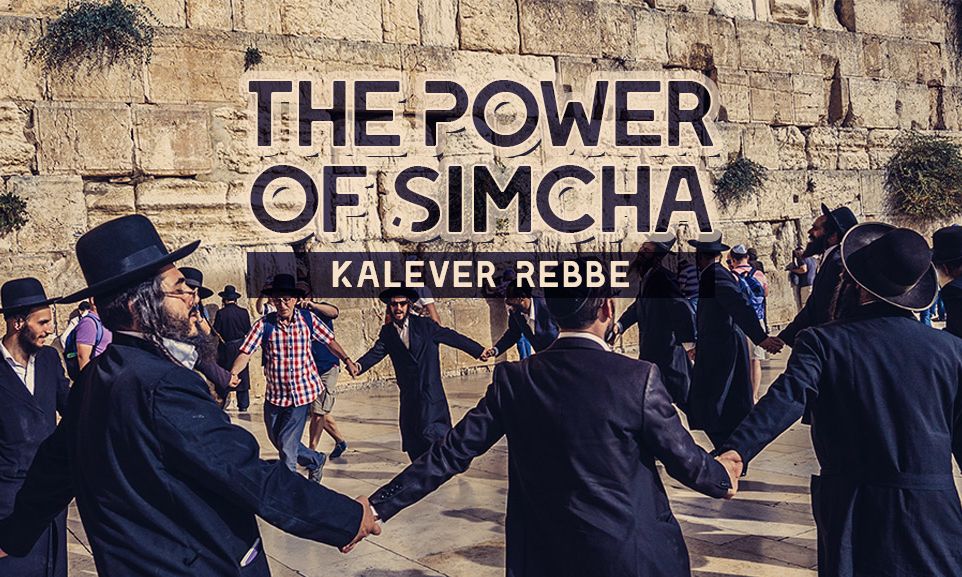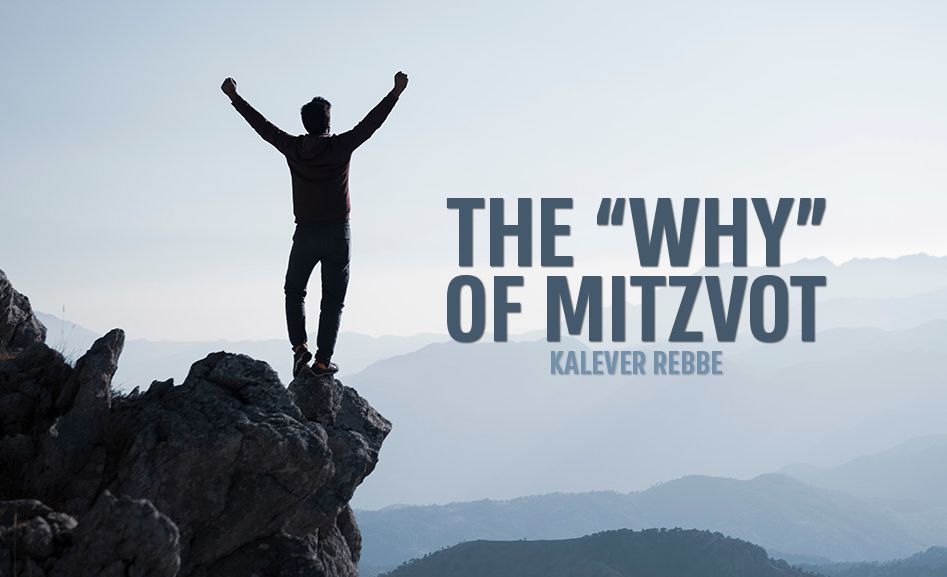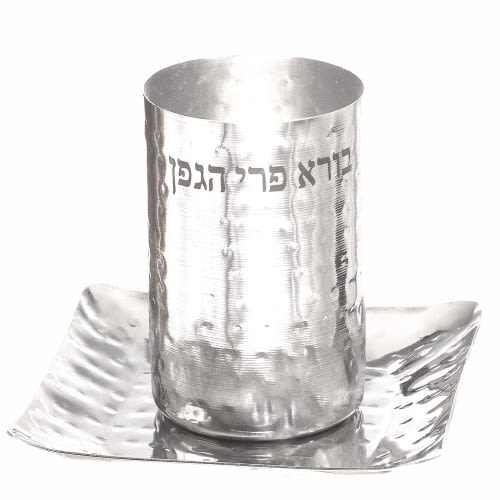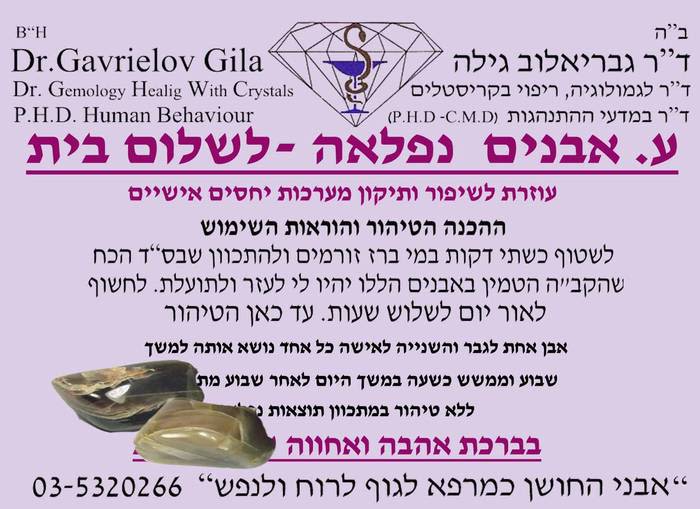
The Power of Simcha
Such a wonderful gift Hashem gave us – to be a Jew! We have the privilege and opportunity to create a bond with Hashem, the Creator of the World, through His mitzvot. The joy from that gift can fill our entire day!

You shall observe My statutes and My ordinances, which a man shall do and live by them. I am the Lord. (Vayikra 18:5)
The Miracles of Simcha
The Klausenberger Rebbe, zt”l, once told me a story about the Noam Elimelech, the Reb Elimelech from Lizensk, zt”l:
As part of the avodat Hashem of the Noam Elimelech, he would inflict upon himself the pain of bitter cold by laying in the snow and covering every inch of his body. One time, while in the snow, he rolled onto a nail that cut a large gash into his back. The blood started flowing immediately. By the time the Rebbe got home, he was soaked in blood and in tremendous agony. He asked his Rebbetzin to take a look at the wound. When she inspected the wound, Rebbetzin lightly said, “Just take some straw and plug it up. Everything is fine.”
The Rebbe, taken back, began to laugh. Immediately, the wound miraculously healed.
Afterward, when explaining this incident, the Rebbe said that according to the laws of nature and all logic, healing was an impossibility. The wound was there! However, because of the Rebbetzin’s faith that everything was going to be fine, we were able to find simcha, joy, even in that pain. That simcha eradicated whatever judgement there was in the Heavens that made me deserve that agony, that wound. Once that din was gone, the wound was able to heal miraculously.
The Seforim explain, that when a yid is happy, if he is finding joy in his life and avodat Hashem, he will be safe from din and afflictions in his life. The tsaddikim similarly explain the pasuk in Yeshayahu (55:12) that says, “For with joy shall you go forth, and with peace shall you be brought…” Through simcha and joy, the difficulties, the suffering, in your life will “go forth” and peace will remain.
The Dancing of Chassidim
On motzei Yom Kippur, after the fast, the Baal Shem Tov went to see if it was possible to say kiddush levanah, the blessing for the new moon. However, there was overcast and the clouds obscured the moon. The Baal Shem Tov returned to his room and began to become extremely agitated. He saw, with his prophetic heavenly vision, that if they were unable to bless the new moon on that night specifically, it was going to be an extremely difficult year for the Jewish people.
The Baal Shem Tov sat in his room, steeped in the deepest contemplation, trying to impact the spiritual realms. He implored the heavens to open, to move the clouds, and let the moon’s light shine forth. However, his efforts were to no avail and the clouds remained. The Baal Shem Tov became even more embittered.
Meanwhile, his Chassidim, unaware of any of this, began to sing and celebrate the conclusion of the holy day. Their singing began to become even more enthusiastic and their dancing even more energetic. The entire room reverberated with their simcha. The door of the Baal Shem Tov’s room became ajar and opened slightly. The Chassidim went in and tried to convince their Rebbe to join them in the singing and dancing. The Baal Shem Tov complied, and while they were dancing, someone came in and said that the skies had cleared, and the moon could be seen!
Later, the Baal Shem Tov commented that the simple and pure joy and simcha of his Chassidim had a greater impact on the heavens than all his deep contemplations and spiritual efforts.
The Jester of Mezibuz
There was once a horrible epidemic in the town of Mezibuz. Reb Baruch from Mezibuz zt”l, davened and prayed with all his abilities that the epidemic should be eliminated and that all those affected should be cured. However, despite his rigorous and devout prayers, the epidemic raged on.
One day, a funeral procession for one of the victims was passing by his home. A Jewish jester, a badchan, came to Reb Baruch’s home to lift his spirits with humor. With an illuminated expression on his face and joy in his voice, he said, “Rebbe! The plague has ended!”
The Rebbe replied, “Look outside my window! The coffin of a victim is being brought to the cemetery as we speak!”
The jester, in a clever tone, answered, “That? No! The cure has been so powerful that even the dead are coming back to life! That coffin is on its way back home from the cemetery!”
The Rebbe smiled slightly. And he began to daven again and immediately the plague began to subside, and everyone saw the power of simcha.
Reb Avraham from Slonim, zt”l, taught that simcha is the key to everyone’s sustenance, both physically and spiritually. Through simcha a yid can achieve anything. And because simcha is so powerful, the yetzer harah tries to capture a person in self-doubt, worry, and depression, particularly during an eit ratzon, a heavenly fortuitous time.
Happy Being a Jew
A yid should be able to have simcha permeate his life simply from the fact that he merited to be born a yid. As the Karliner Rebbe explained, the simcha a yid feels when he says the bracha in the morning of thanking Hashem for “not creating him a gentile”, should be powerful enough to last the entire day. If a yid does not feel that simcha and it does not remain with him throughout the day, he clearly, the Rebbe explained, does not understand the depths of that bracha.
Reb Mottle Slanimer quoted the Karliner Rebbe that said: the simcha a yid has from simply being a Jew, guarantees that he will not be harmed in any way, and that he will have only good things in his life, both physically and spiritually.
Every yid, every single Jew, should be overwhelmed with simcha from the mere fact that he has the privilege and opportunity to create a connection, a bond, with Hashem, the Creator of the World, through His mitzvot. That simcha helps that yid tap into a flow of blessings and goodness into this world. In fact, it even adds to that flow, erasing and uprooting any din, judgement, which might result in hardships and suffering in his life and the world at large. When a yid performs a mitzvah with simcha, they weaken the power of the evil heavenly forces and strengthen the holy ones.
The Reward for Simcha
Chazal teaches (Kiddushin 39b) that there is not a reward in this world for the mitzvot. The simplest understanding of this teaching is that the main purpose for a person being born into this world is to earn eternal life in the World to Come. Each mitzvah generates a specific amount of reward. If someone were to receive a reward in this world, there will not be any of that reward left for the eternal life waiting in the World to Come, where the benefits of those rewards can be felt infinitely.
However, the commentators still ask the obvious question: don’t we see many times that Chazal prescribes a reward in this world for a specific mitzvah?! Isn’t that a contradiction to this logic?
The seforim Hakadoshim answer this conflict with a beautiful insight. There is not a reward in this world for the actual mitzvah. However, a person is rewarded in this world for the way he performed the mitzvah, for the simcha he felt as he was fulfilling Hashem’s Will.
The Orchot Tsaddikim (Shar Simcha) taught that the reward for someone who performs a mitzvah with simcha is a thousand times greater than the person who performs the mitzvah as if it was a burden.
Chazal taught (Brachot 8a) that the enjoyment from working hard is greater than yirat Shemayim, Fear of Heaven. The Chida in his book entitled Lev David explained the words of Chazal, that the reward for someone who toils to do a mitzvah with simcha is greater than someone who toiled to perform a mitzvah out of fear.
Perform Them with Life
This is what our pasuk is teaching us here: “You shall observe My statutes and My ordinances, which a man shall do and live by them.” When a person performs the mitzvot in a way that he draws liveliness from them, that he performs them with simcha and enthusiasm, then he will merit to see and feel “I am the Lord”.
Through that simcha, a person can connect to Hashem and see Him in his daily life. He can feel Hashem’s presence through the goodness and brachot that will flow into every crevice of his being and every element of his life.
With Hashem’s help, each of you should find the strength and inspiration to always fulfill Hashem’s Will with simcha. You should internalize the incredible privilege you have as a yid, to have the ability to connect to Hashem through your avodah. That simcha should eradicate the suffering, challenges, and hardships in your life and for the yidden around the world, and replace those dark moments with light, blessings and only goodness. Amen.
***
The Kalever Rebbe is the seventh Rebbe of the Kaalov Chasidic dynasty, begun by his ancestor who was born to his previously childless parents after receiving a blessing from the Baal Shem Tov zy”a, and later learned under the Maggid of Mezeritch zt”l. The Rebbe has been involved in outreach for more than 30 years, and writes weekly emails on understanding current issues through the Torah. You can sign up at www.kaalov.org.











Tell us what you think!
Thank you for your comment!
It will be published after approval by the Editor.